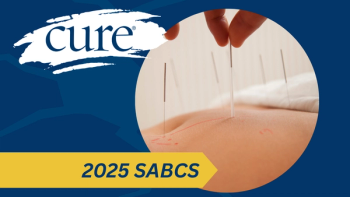
Childhood Down Syndrome and Acute Myeloid Leukemia Association ‘Greater Than Previously Reported’
An analysis of more than 3.5 million children born between January 1996 and December 2016 demonstrated a stronger association between Down syndrome and acute myeloid leukemia risk than has been previously reported.
Down syndrome continues to be a notable risk factor for childhood leukemia, particularly acute myeloid leukemia (AML), according to the results of a retrospective analysis of more than 3.5 million children published in The Journal of Pediatrics.
Of note, the study authors highlighted, the associations appear greater than previously reported.
“We found that the leukemia risks were greatly elevated in children with Down syndrome, and for some leukemia subtypes the risks were greater than previously reported,” they wrote. “Before age 15 years, 36 in 1,000 children with Down syndrome were diagnosed with a leukemia compared with 0.8 in 1,000 other children.”
Down syndrome has been shown to be associated with increased risks for a multitude of health conditions in children, including a significantly greater incidence of leukemia than the general population. Moreover, children with Down syndrome have an estimated 150-fold greater risk of developing AML. However, the authors noted, that information is mostly outdated.
“Reported risk estimates for leukemia among children with Down syndrome are mostly based on studies of children born as early as the 1930s,” they wrote. “Over time, childhood (acute lymphocytic leukemia [ALL]) incidence has increased and AML has mostly remained stable except for increases in some subgroups, so it is unknown whether past estimates for leukemia risk among children with Down syndrome accurately reflect today's at-risk population.”
As a result, the authors aimed to estimate the association of Down syndrome and risk for childhood leukemia among 3,905,399 live births between January 1996 and December 2016 across seven health care systems in the United States and Ontario, Canada.
Assessing a diagnosis of primary leukemia in children with no prior diagnoses of any cancer served as the main goal of the study. Children were then followed from birth until any one of several instances including death, any cancer diagnosis, age of 15 years or end of follow-up (which was December 2016) occurred.
Of the study population, 4,401 children received a diagnosis of Down syndrome. More than half of the children (approximately 65%) were followed for five years or more and 40% were followed for 10 years or more. During follow-up, children with Down syndrome were more likely to receive a diagnosis of leukemia, another cancer or die than those without the genetic disorder.
A diagnosis of leukemia occurred in 2,065 children and Down syndrome was more prevalent in those with leukemia than those without (5.7% versus 0.1%). More than half of the diagnoses (67%) of leukemia occurred before the children turned 5-years-old.
The proportion of children with Down syndrome at risk for AML, according to calculations from the study authors, was 1,405 cases per 100,000 children at age 4 years. That cumulative incidence, they mentioned, increased from birth to 2 years, but remained unchanged between the ages of 4 and 14. Additionally, the authors highlighted the cumulative incidence of ALL among children with Down syndrome was 1,059 per 100,000 children at age 4 and 1,714 per 100,000 children at age 14.
The study results also showed that the association of Down syndrome and risk for any leukemia diagnosis was greatest among children younger than 5 years.
“In a large, contemporary cohort of children from the U.S. and Ontario, Canada, we found a stronger association between Down syndrome and AML risk than previously reported,” the authors concluded. “Further research is warranted to investigate why our study's AML rates for children with Down syndrome were much greater than previous reports and whether they are related to identifiable exposures such as ionizing radiation from medical imaging.”
For more news on cancer updates, research and education, don’t forget to





